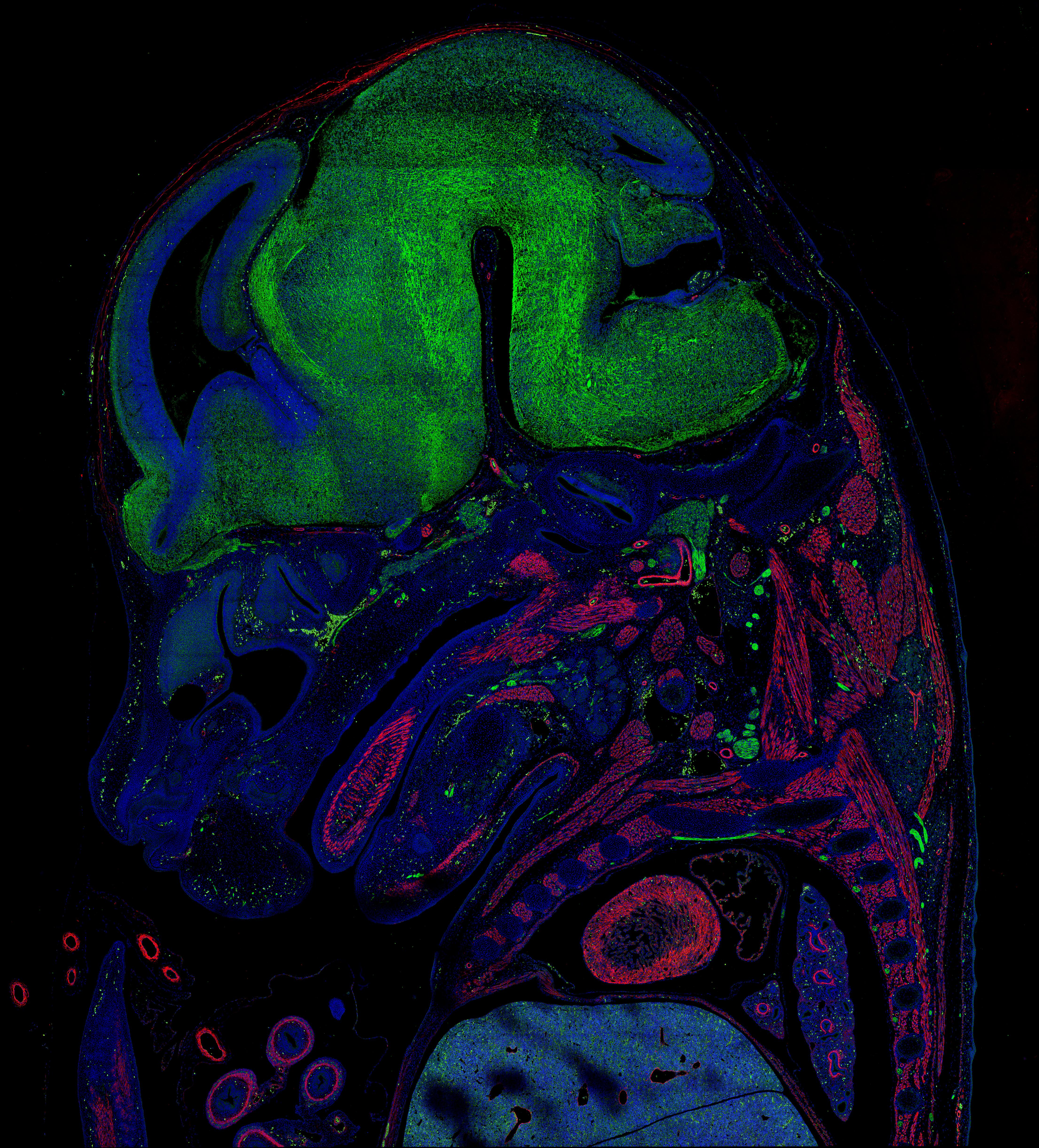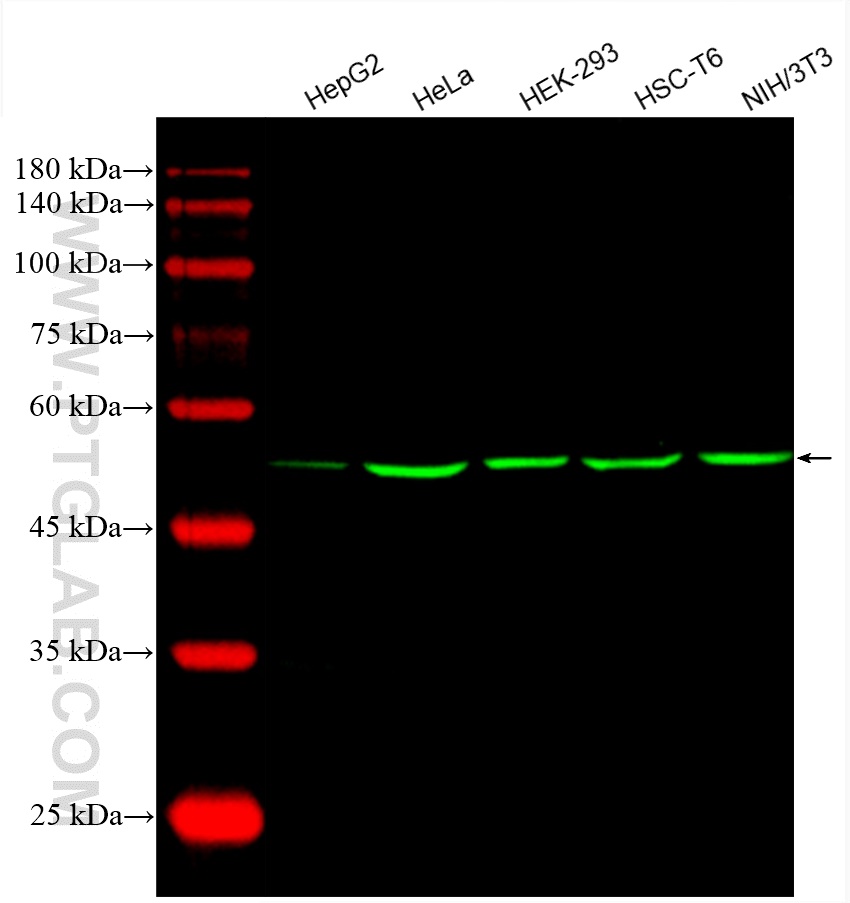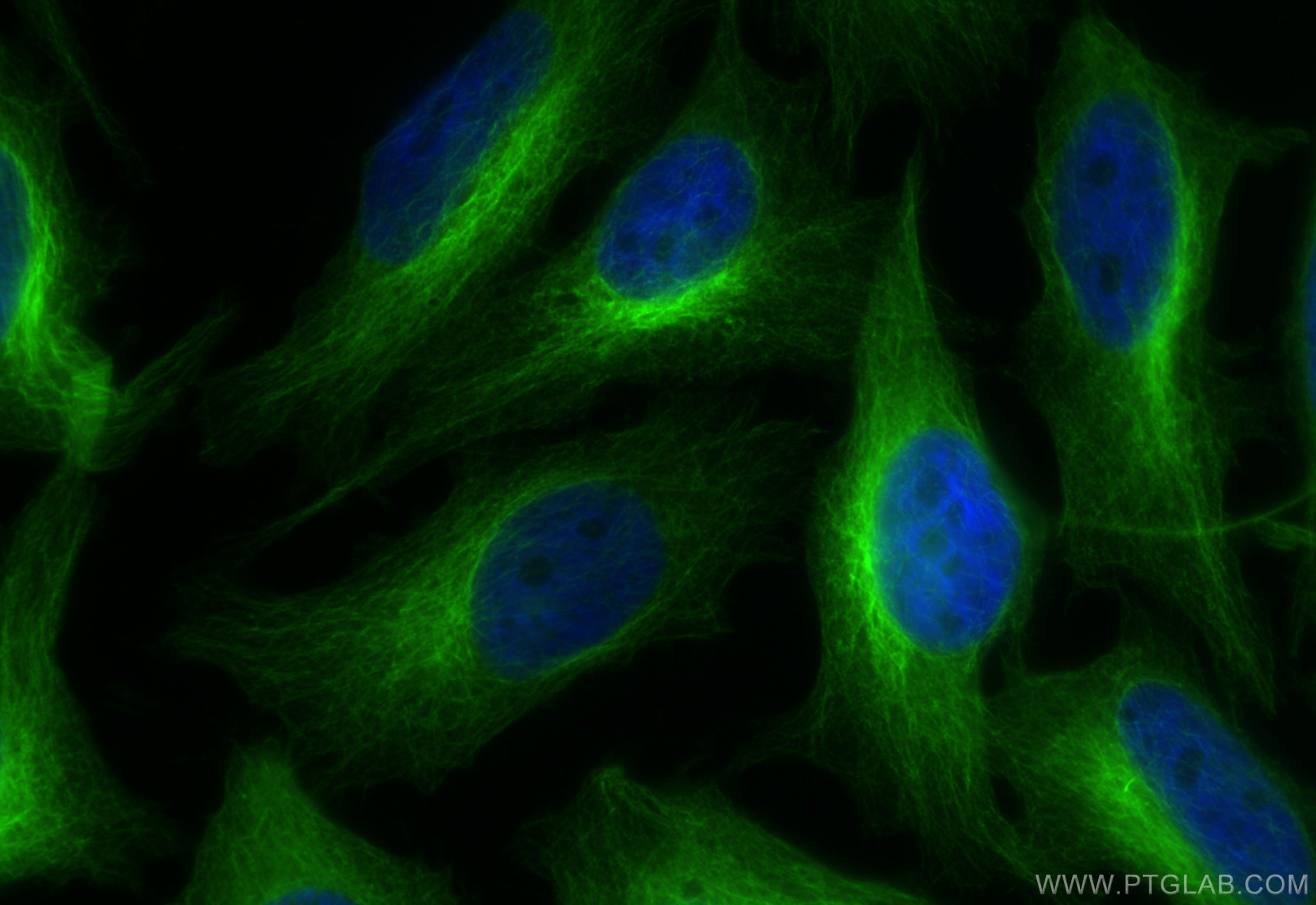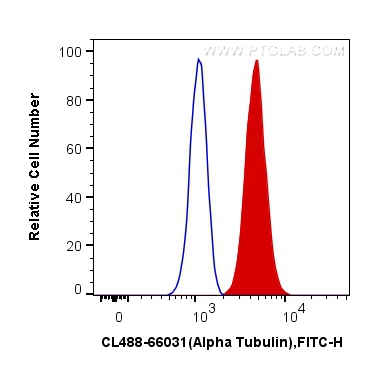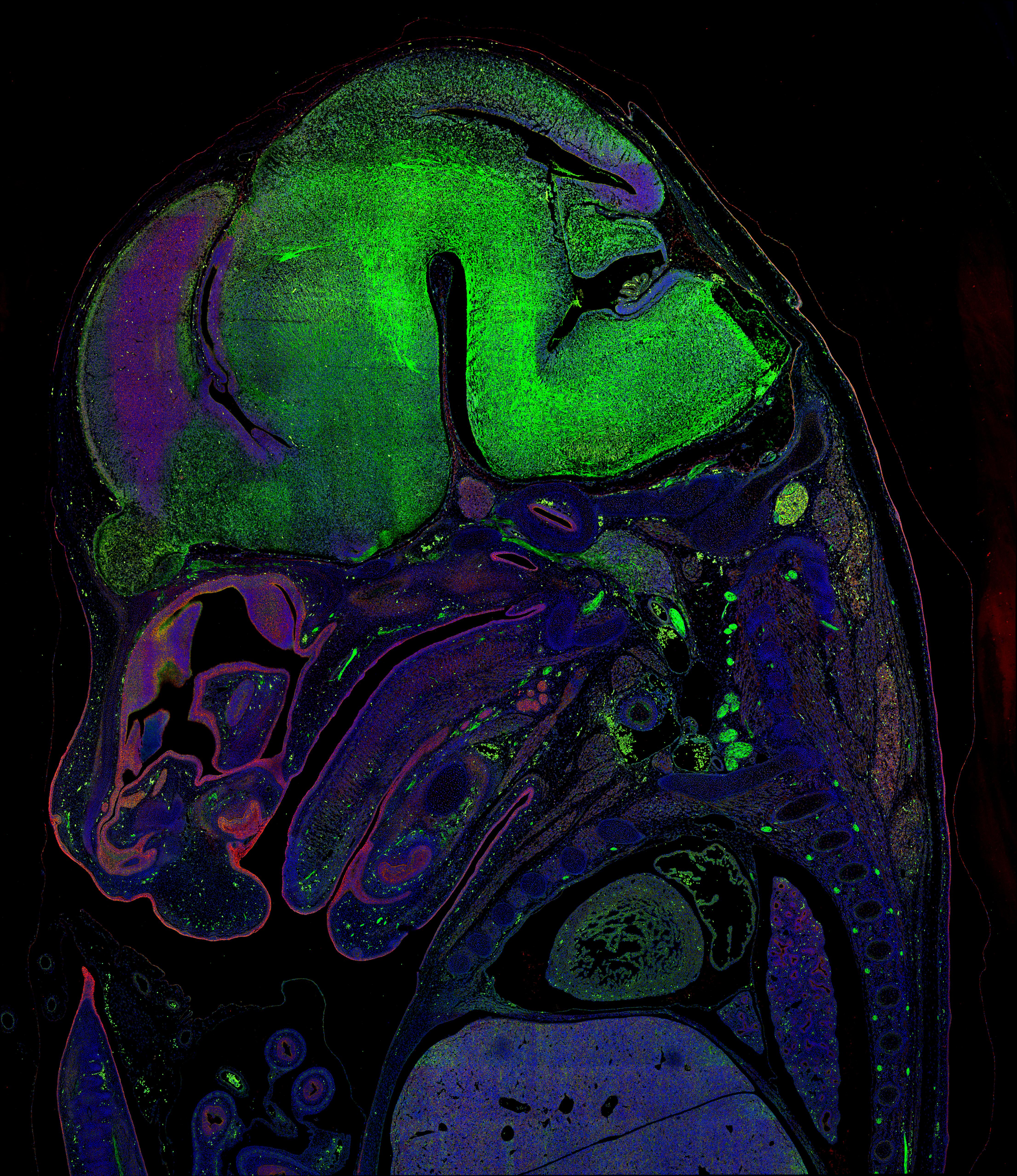验证数据展示
经过测试的应用
| Positive WB detected in | HepG2 cells, HeLa cells, HEK-293 cells, HSC-T6 cells, NIH/3T3 cells |
| Positive IF/ICC detected in | HeLa cells |
| Positive FC (Intra) detected in | HeLa cells |
推荐稀释比
| 应用 | 推荐稀释比 |
|---|---|
| Western Blot (WB) | WB : 1:300-1:600 |
| Immunofluorescence (IF)/ICC | IF/ICC : 1:50-1:500 |
| Flow Cytometry (FC) (INTRA) | FC (INTRA) : 0.40 ug per 10^6 cells in a 100 µl suspension |
| It is recommended that this reagent should be titrated in each testing system to obtain optimal results. | |
| Sample-dependent, Check data in validation data gallery. | |
发表文章中的应用
| IF | See 4 publications below |
产品信息
CL488-66031 targets Alpha Tubulin in WB, IF/ICC, FC (Intra) applications and shows reactivity with human, mouse, rat, canine samples.
| 经测试应用 | WB, IF/ICC, FC (Intra) Application Description |
| 文献引用应用 | IF |
| 经测试反应性 | human, mouse, rat, canine |
| 文献引用反应性 | human, mouse |
| 免疫原 |
CatNo: Ag18034 Product name: Recombinant human Tubulin-Alpha protein Source: e coli.-derived, PET28a Tag: 6*His Domain: 1-451 aa of BC009314 Sequence: MRECISIHVGQAGVQIGNACWELYCLEHGIQPDGQMPSDKTIGGGDDSFNTFFSETGAGKHVPRAVFVDLEPTVIDEVRTGTYRQLFHPEQLITGKEDAANNYARGHYTIGKEIIDLVLDRIRKLADQCTGLQGFLVFHSFGGGTGSGFTSLLMERLSVDYGKKSKLEFSIYPAPQVSTAVVEPYNSILTTHTTLEHSDCAFMVDNEAIYDICRRNLDIERPTYTNLNRLISQIVSSITASLRFDGALNVDLTEFQTNLVPYPRIHFPLATYAPVISAEKAYHEQLSVAEITNACFEPANQMVKCDPRHGKYMACCLLYRGDVVPKDVNAAIATIKTKRSIQFVDWCPTGFKVGINYQPPTVVPGGDLAKVQRAVCMLSNTTAIAEAWARLDHKFDLMYAKRAFVHWYVGEGMEEGEFSEAREDMAALEKDYEEVGVDSVEGEGEEEGEEY 种属同源性预测 |
| 宿主/亚型 | Mouse / IgG2b |
| 抗体类别 | Monoclonal |
| 产品类型 | Antibody |
| 全称 | tubulin, alpha 1b |
| 别名 | TUBA1B, Tubulin alpha 1B chain, 1E4C11, Alpha-tubulin ubiquitous, EC:3.6.5.- |
| 计算分子量 | 50 kDa |
| 观测分子量 | 50-55 kDa |
| GenBank蛋白编号 | BC009314 |
| 基因名称 | Alpha Tubulin |
| Gene ID (NCBI) | 10376 |
| RRID | AB_2883232 |
| 偶联类型 | CoraLite® Plus 488 Fluorescent Dye |
| 最大激发/发射波长 | 493 nm / 522 nm |
| 形式 | Liquid |
| 纯化方式 | Protein A purification |
| UNIPROT ID | P68363 |
| 储存缓冲液 | PBS with 50% glycerol, 0.05% Proclin300, 0.5% BSA, pH 7.3. |
| 储存条件 | Store at -20°C. Avoid exposure to light. Stable for one year after shipment. Aliquoting is unnecessary for -20oC storage. |
背景介绍
There are five tubulins in human cells: alpha, beta, gamma, delta, and epsilon. Tubulins are conserved across species. They form heterodimers, which multimerize to form a microtubule filament. An alpha and beta tubulin heterodimer is the basic structural unit of microtubules. The heterodimer does not come apart once formed. The alpha and beta tubulins, which are each about 55 kDa MW, are homologous but not identical. Alpha tubulin is useful for scientists across fields as an internal control due to its high, ubiquitous expression pattern. Tubulin expression may vary according to resistance to antimicrobial and antimitotic drugs. This anitbody is CL488(Ex/Em 488 nm/515 nm) conjugated.
实验方案
| Product Specific Protocols | |
|---|---|
| FC protocol for CL Plus 488 Alpha Tubulin antibody CL488-66031 | Download protocol |
| IF protocol for CL Plus 488 Alpha Tubulin antibody CL488-66031 | Download protocol |
| WB protocol for CL Plus 488 Alpha Tubulin antibody CL488-66031 | Download protocol |
| Standard Protocols | |
|---|---|
| Click here to view our Standard Protocols |
发表文章
| Species | Application | Title |
|---|---|---|
Free Radic Biol Med Iron overload modulates follicular microenvironment via ROS/HIF-1α/FSHR signaling | ||
Clin Genet A novel homozygous CFAP65 mutation in humans causes male infertility with multiple morphological abnormalities of the sperm flagella. | ||
Transl Androl Urol Novel bi-allelic mutations in DNAH1 cause multiple morphological abnormalities of the sperm flagella resulting in male infertility. | ||
Reprod Toxicol Bisphenol M inhibits mouse oocyte maturation in vitro by disrupting cytoskeleton architecture and cell cycle processes | ||
Am J Physiol Cell Physiol Melatonin partially rescues defects induced by tranexamic acid exposure during oocyte maturation in mice |

